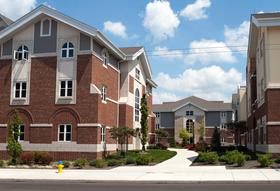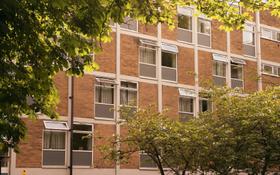In an effort to provide a more complete college experience to students, many community colleges are adding student housing to the campus map. College dormitories have been a mainstay at four-year colleges and universities throughout their history, but housing at community colleges – home of the adult college student – is a relatively new idea. Are community college dormitories a good idea? Many schools and students are responding to that question with a resounding “yes.”
Community colleges are responding to a desire from students for more campus housing. The report in Diverse Issues in Higher Education stated that in 2000, 225 community colleges across the country offered dormitories on their campuses. By 2010, that number had increased to 260 schools. Just two years later, in 2012, that number had risen sharply to 391 two-year institutions. If the numbers are any indication, demand for campus housing at community colleges is on the rise.
Community Colleges Weigh Campus Housing Benefits
Although the addition of dormitories is growing at community colleges nationwide, the total number of campuses boasting student housing is still too few to collect good evidence on whether these dorms will pay off for schools. However, a report at the Glens Falls Post-Star found that many community colleges think the addition of dormitories is a positive one for two-year schools. Of the 30 community colleges in the state of New York, 15 now offer some type of on-campus housing to students.
According to the report, community colleges may enjoy significant benefits when student housing is added to the campus, including:
- Greater diversity to the college student body
- Higher revenue for the college overall
- Increases in student enrollment
- A richer, fuller college experience for students
Students seek out community colleges with campus housing for a variety of reasons. They may be looking for a traditional college experience with a cheaper price tag. Specialized programs at a particular school may attract students from another state, and those students will need a place to live while going to school. Even students that live in the same state as the school may prefer housing on campus to minimize commute time and allow for more flexible scheduling of courses. Students may also find it is harder to get into four-year schools, and community colleges offer a viable option for the first two years of the college experience.
This video offers a look at the residence halls at Herkimer Community College.
“More and more, the four-year schools, they don’t have the capacity to take students,” Ronald Heacock, president of SUNY Adirondack in New York, told the Post-Star. “They are getting more selective all the time. There are a lot of students that would like to live away and have the college experience.”
SUNY is one of the community colleges in New York that is interested in adding campus housing to the mix. Schools that already provide the dormitory option in the state include Dutchess Community College in Schenectady, Finger Lakes Community College and Mohawk Valley Community College. Mohawk Valley was actually the first community college in New York to offer campus housing, with the opening of its first residential hall in 1966.
Apartments another Option for Community Colleges
Tompkins Cortland Community College in Dryden, New York, opened its first apartment complex next to the college campus in the 1990s. The demand for housing was so great, the school has since added five more buildings. The housing accommodates more than 800 students in all. Herkimer County Community College offers a similar type of apartment complex near its campus that currently consists of three buildings and houses around 625 students. Around 60 percent of the students that attend Herkimer come from outside the county, so housing is a necessity for many of them.
Corning Community College to Open First Dorm this Year
Corning Community College in Corning, New York is slated to open its first campus dormitory later this year. According to the Star-Gazette, Corning broke ground on the building at the end of April last year. The dorm will feature 83 suites that are designed to hold up to 322 students. All of the suites will include a living room, bathroom, and bedrooms. Single suites will offer four bedrooms that sleep one student each, while double suites provide two bedrooms that each sleep two students. The cost to live in the new residence hall will range from around $8,000 to $10,000 per academic year.
This video offers a look at the residence halls at Corning Community College.
Cayuga Community College Reviewing Architectural Plans
Cayuga Community College is another New York school moving closer to offering student housing. The Auburn Citizen recently reported that the school has finished reviewing architectural plans for a new residence hall that would hold up to 300 students. The V-shaped building will include a variety of student suites, a fitness center, study lounges, and a computer-filled classroom. Outdoors, students would have their own terrace for studying al fresco.
Student housing does not come without its share of challenges. Schools that add dormitories realize a new need for extended hours in cafeterias and other facilities. Security also becomes a greater concern, as students are now on campus all hours of the day and night. Schools are also discovering that maintenance of student housing can be a full-time job as student areas tend to take a beating throughout the school year.
Despite the challenges, more two-year schools are exploring the world of campus housing today. As student demand increases for this commodity, it seems probable that on-campus housing at community colleges will only increase over the next few years.
Questions? Contact us on Facebook. @communitycollegereview














